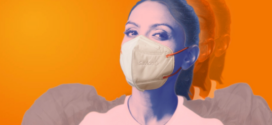Childhood leukemia has affected thousands of children worldwide each year. It is a type of cancer that originates in the bone marrow, the soft tissue inside bones responsible for producing blood cells. Although the word “leukemia” can be frightening, it is crucial to understand that significant advancements in medical research and treatment have greatly improved outcomes for children diagnosed with this disease.
Types of Childhood Leukemia:
There are several types of childhood leukemia, but the two most common forms are acute lymphoblastic leukemia (ALL) and acute myeloid leukemia (AML). ALL is the most prevalent, accounting for approximately 75% of all pediatric leukemia cases. It occurs when there is an overproduction of immature lymphocytes, a type of white blood cell. AML, on the other hand, is less common but tends to be more aggressive. It involves the rapid growth of abnormal myeloid cells, which are responsible for producing red blood cells, platelets, and certain types of white blood cells.
Symptoms of Childhood Leukemia:
Childhood leukemia often presents with various symptoms that may initially appear vague or unrelated. These can include:
- Fatigue and weakness: Children may exhibit excessive tiredness, lack of energy, and a general feeling of weakness.
- Frequent infections: Due to compromised immune systems, children with leukemia are prone to infections, such as respiratory infections, urinary tract infections, and skin infections.
- Easy bruising and bleeding: Leukemia affect the body’s ability to produce healthy blood cells, leading to easy bruising, bleeding gums, or frequent nosebleeds.
- Bone and joint pain: Leukemia cells may accumulate in the joints and bones, causing pain and discomfort.
- Swollen lymph nodes: The lymph nodes, particularly in the neck and groin area, may become enlarged.
- Loss of appetite and weight loss: Children with leukemia may experience a reduced appetite, leading to weight loss and a decrease in overall physical well-being.
It is important to note that these symptoms can also be associated with other conditions, and their presence does not automatically indicate leukemia. However, if any of these symptoms persist or worsen, it is essential to consult a healthcare professional for a proper evaluation.
Treatment Options:
The treatment approach for childhood leukemia depends on various factors, including the type of leukemia, the child’s age, and overall health. The primary goal of treatment is to eliminate cancer cells and restore healthy bone marrow function. Common treatment modalities include:
- Chemotherapy: Chemotherapy uses powerful drugs to kill cancer cells and is the mainstay of treatment for childhood leukemia. It may involve different combinations of medications administered orally, intravenously, or directly into the cerebrospinal fluid.
- Radiation therapy: This treatment uses high-energy X-rays or other forms of radiation to target and destroy cancer cells. It is often used in specific cases to target leukemia cells in the brain and spinal cord.
- Stem cell transplant: For certain high-risk or relapsed cases, a stem cell transplant may be necessary. This procedure involves replacing diseased bone marrow with healthy stem cells obtained from a compatible donor.
- Targeted therapy: Targeted drugs can specifically identify and attack cancer cells, minimizing harm to healthy cells. These therapies are still being studied in clinical trials for childhood leukemia.
Childhood leukemia is a challenging disease that requires prompt diagnosis and specialized treatment. Fortunately, advances in medical research have greatly improved survival rates over the years. With ongoing research and advancements in treatment modalities, the future looks promising for children diagnosed with leukemia.
By Dr. Intezar Mehdi, Director and Head of the Department, Senior Consultant – Paediatric Haeamtology Oncology & BMT at HCG Cancer Centre, Bengaluru.
 Newspatrolling.com News cum Content Syndication Portal Online
Newspatrolling.com News cum Content Syndication Portal Online





